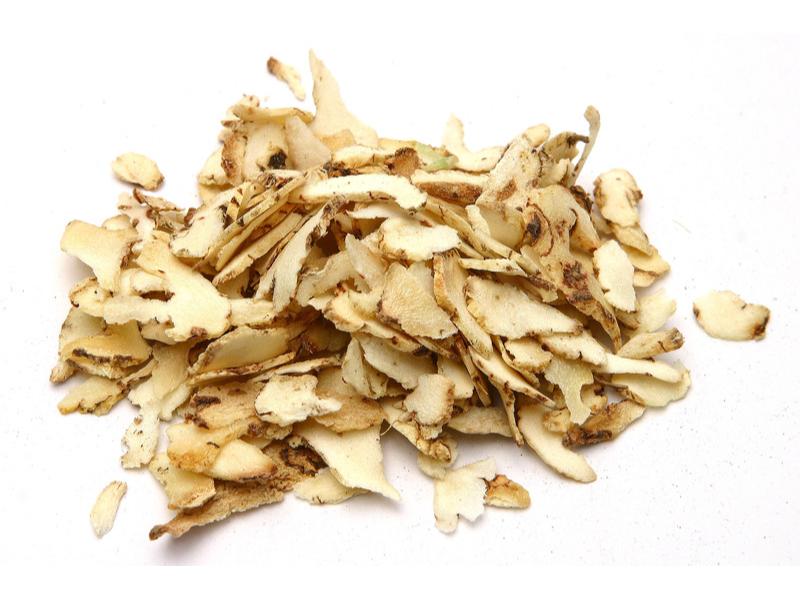Search in medicinals
Bletillae Rhizoma
Bletilla [root]
白及 〔白及〕 bái jí

Alternate Chinese names: 白芨 bái jí
Kingdom: Plant
Origin in PRC Pharmacopoeia: Bletilla striata (Thunb.) Reichb. f. (PRC Pharmacopoeia)
Origin in unofficial sources: Bletilla striata (Thunb.) Reichb. f.
Use: Medicinal
Category: Blood-stanching agents / Astringent blood-stanching agents
Properties: Bitter, sweet, astringent; slightly cold.
Channel entry: Liver, lung, and stomach channels.
Actions and indications:
- Promotes contraction and stanches bleeding: Expectoration of blood, vomiting of blood (blood ejection), and bleeding from
incised wounds . - Disperses swelling and engenders flesh: Toxin swelling of welling-abscesses and
sore s; cracked skin on the hands and feet.
Dosage and method: Oral: 3–15g in decoctions, or 1.5–5g as a powder for internal use. Bái jí is also commonly used externally.
Warnings: Bái jí is traditionally said to clash with wū tóu (Aconitum). Use it with care in coughing of blood due to external contraction, initial-stage pulmonary welling-abscess, and any gastric or pulmonary bleeding caused by exuberant repletion heat or fire toxin.
Product description: This is a fat, brown tuber with one or two branches and an overall length of 1.5–4 cm. At the top is a scar left by the stalk, and at bottom is the scar left where another tuber was attached. It is hard and horny and does not break easily. It is cut into thin oblique or transverse slices, which are irregular in shape. The cut edge is white or pale yellow, horny, semitranslucent, with visible vascular bundles.
Quality: Tubers that are pale in color and semitranslucent when sliced are the best.
Production area: Guìzhōu, Sìchuān, Húnán, Hénán, Zhèjiāng, and Shǎnxī (Shaanxi).
Etymology: The name bái jí 白及, literally white spreading,
reflects the color of the tuber, which appears to spread to the rest of the plant.